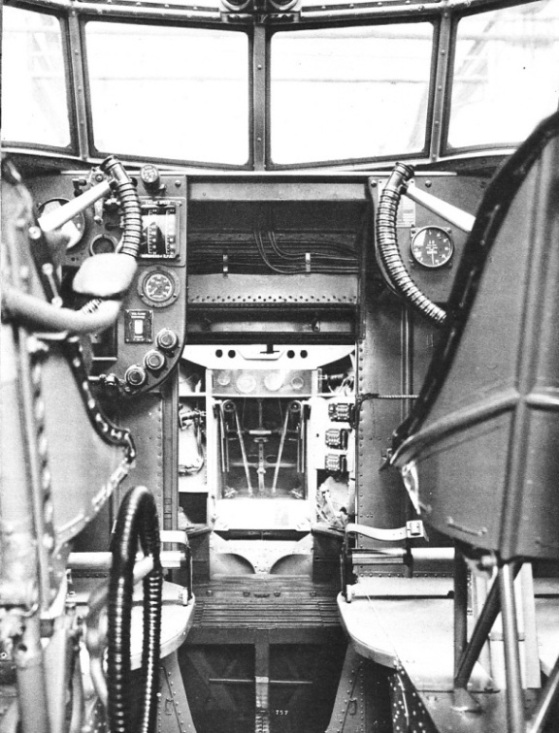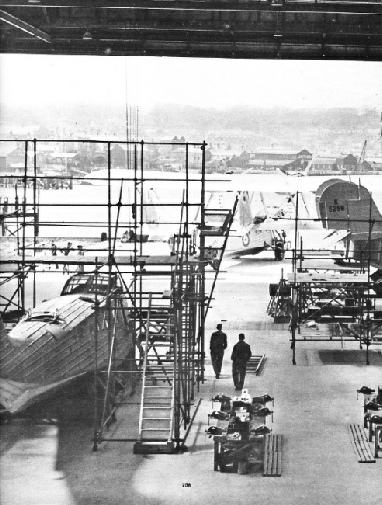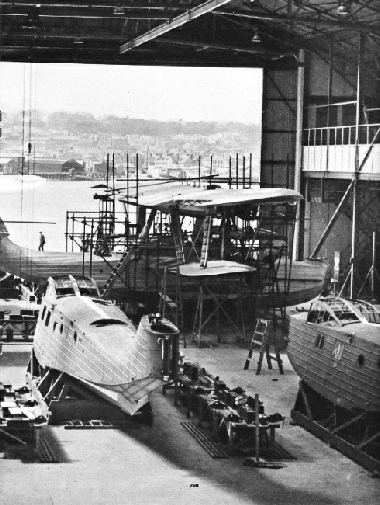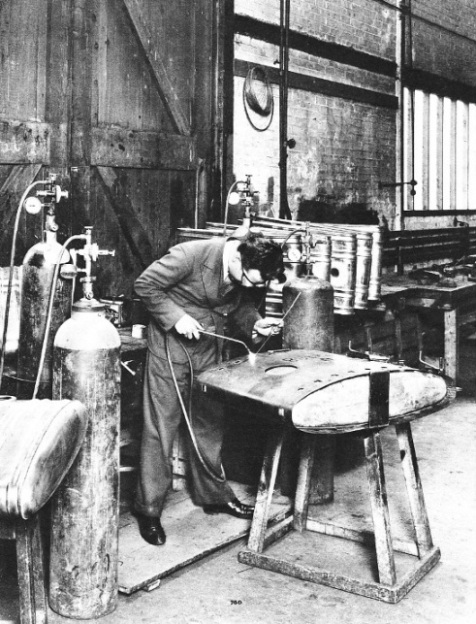
© Wonders of World Aviation 2015-


Part 28
Part 28 of Wonders of World Aviation was published on Tuesday 13th September 1938, price 7d.
This part included a central photogravure supplement further illustrating the article on Saro Aircraft.
The Cover
Our cover this week shows a Southampton class flying boat in the air over the Needles, Isle of Wight. The Supermarine Southampton Mark II is a twin-engined bombing and naval reconnaissance tractor biplane. The type originally had Napier Lion Series V engines; later, Rolls-Royce Kestrels were substituted.
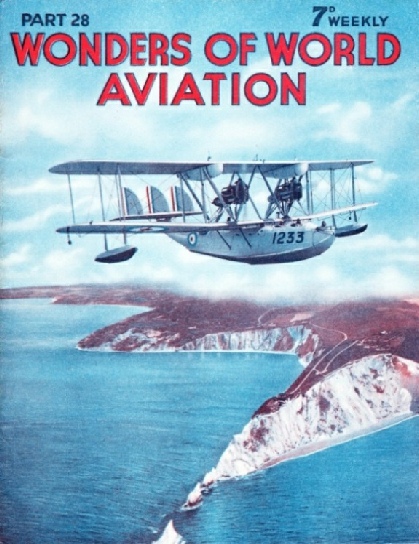
Contents of Part 28
RAF Operations Overseas (Part 2)
The importance of the work done by the Royal Air Force overseas is not generally appreciated, but this chapter gives some fascinating details of its wide scope and interest. This article is concluded from part 27.
Development of the Bomber
The only bomb available for British aircraft in August 1914 was the 20-lb Hale. Bombs were not at first used by the RFC, whose pilots looked upon aeroplanes as flying scouts for the ground forces. Soon, however, the offensive properties of aeroplanes became apparent. In this chapter the development of the bomber into large twin-engined types is fully described.
This is the fifth article in the series Aeroplanes of the Great War.
Saunders Roe Aircraft
There is a real connexion between small a small boat-building business established at Streatley-on-Thames more than a century ago by Mr. M. Saunders, and the great aviation business of Saunders-Roe Ltd. We have already referred in this Work to the career of Sir Alliott Verdon-Roe , and this chapter describes Saro Aircraft. Saunders-Roe Ltd. has concentrated mainly, as might have been expected, on the design and construction of flying boats, including amphibian aircraft. One of the chief advantages of the amphibian over the flying boat is that it can alight on the water, taxi to the slipway, then lower its wheels and run up the slipway with the ease and simplicity of an ordinary landplane.
”Solid” Meteorology
Meteorology is daily becoming of greater importance to the air-line pilot and to the long-distance flier. Meteorology is a much more complicated subject for the aviator than is is for the navigator of surface transport. The navigator of a ship is concerned only with conditions at ground level. The navigator of an aeroplane requires to know the weather conditions at various heights as well as at surface level. Thus he is concerned with three-dimensional meteorology so that he may choose the best height at which to fly. In this chapter describes the principles of “solid” meteorology.
Training Boys in the RAF (Part 1)
There are two ways in which boys may join the Royal Air Force. The first is as apprentices and the second as boy entrants. In both classes a thorough training in a skilled trade is given. This chapter describes the many opportunities for boys between 15 and 17¼ to be taught skilled trades in the RAF. The article is concluded in part 29.
Saro Aircraft
Photogravure Supplement
THE BOMB-AIMER’S POSITION can be seen forward between the two pilots’ seats in this photograph of a Saro London flying boat. To the right of the bomb-aimer’s position are the three rows of switches which release the bombs electrically. The bombs are carried underneath the lower wings between the hull and the wing floats.
Saro Aircraft Photogravure Supplement - 2
MAIN WORKSHOP of Saunders-Roe, Ltd , at Cowes. It is sufficiently large to take from ten to twelve flying boats in various stages of construction. The doorway has an opening 150 feet wide and 40 feet high. This doorway is closed by six steel-framed sliding doors, each weighing five tons but easily operated by one man by means of hand gearing.
Welding in Aeronautics
In recent years the use of welded joints in aircraft construction has increased greatly, and the art of welding now plays a major part in production. This chapter deals with this aspect of aviation, and is a reminder that welding processes are used not only for the aeroplanes themselves, but also for making aircraft carriers and the hangars in which the aircraft are stored.
